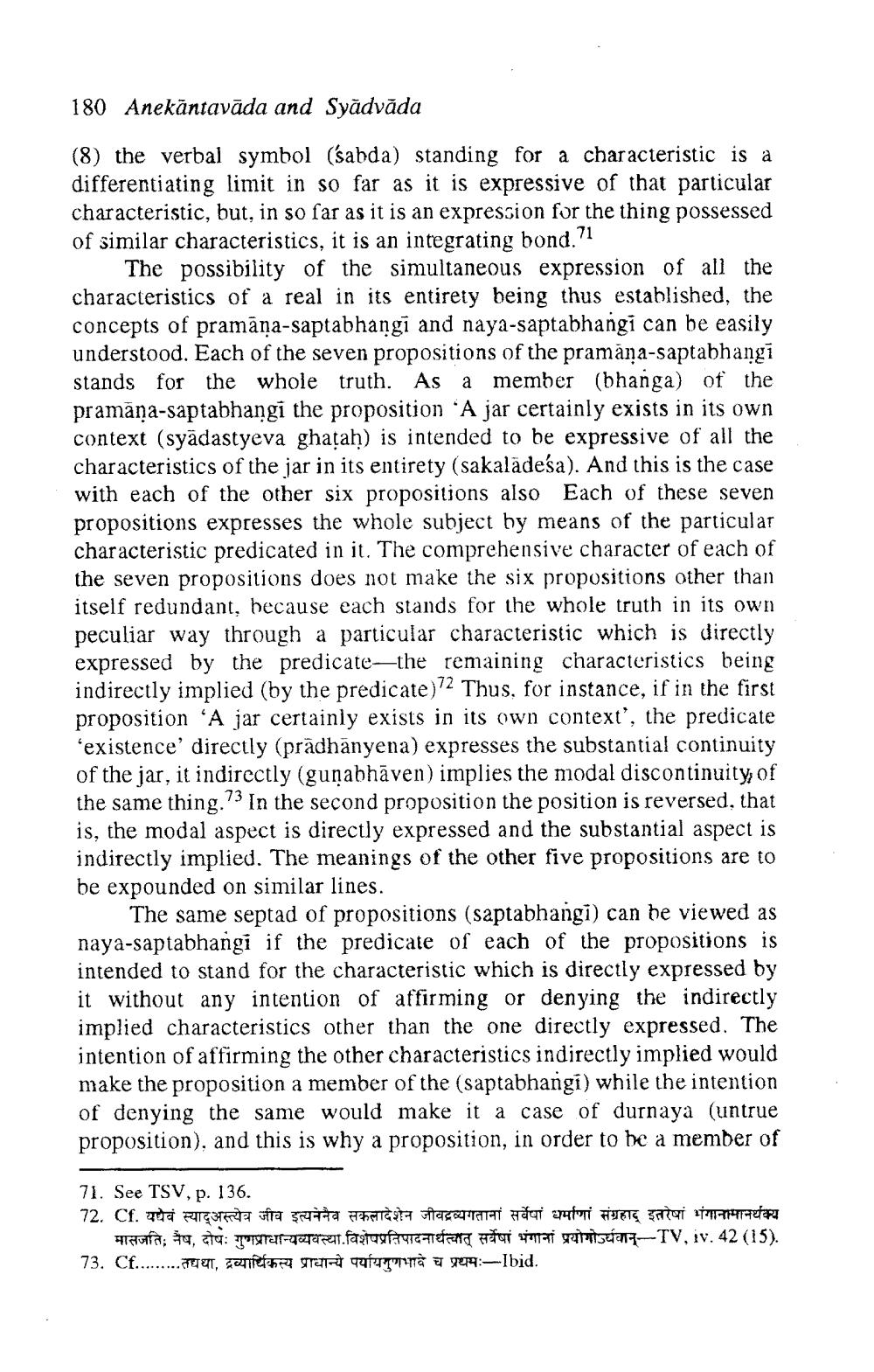________________
180 Anekāntavāda and Syàdvăda
(8) the verbal symbol (sabda) standing for a characteristic is a differentiating limit in so far as it is expressive of that particular characteristic, but, in so far as it is an expression for the thing possessed of similar characteristics, it is an integrating bond.
The possibility of the simultaneous expression of all the characteristics of a real in its entirety being thus established, the concepts of pramāņa-saptabhangi and naya-saptabhangi can be easily understood. Each of the seven propositions of the pramana-saptabhangi stands for the whole truth. As a member (bhanga) of the pramāna-saptabhangi the proposition -A jar certainly exists in its own context (syādastyeva ghatah) is intended to be expressive of all the characteristics of the jar in its entirety (sakalādesa). And this is the case with each of the other six propositions also Each of these seven propositions expresses the whole subject by means of the particular characteristic predicated in it. The comprehensive character of each of the seven propositions does not make the six propositions other than itself redundant, because each stands for the whole truth in its own peculiar way through a particular characteristic which is directly expressed by the predicate—the remaining characteristics being indirectly implied (by the predicate)72 Thus, for instance, if in the first proposition ‘A jar certainly exists in its own context, the predicate 'existence' directly (prādhānyena) expresses the substantial continuity of the jar, it indirectly (gunabhāven) implies the modal discontinuity of the same thing.73 In the second proposition the position is reversed, that is, the modal aspect is directly expressed and the substantial aspect is indirectly implied. The meanings of the other five propositions are to be expounded on similar lines.
The same septad of propositions (saptabhangi) can be viewed as naya-saptabhangi if the predicate of each of the propositions is intended to stand for the characteristic which is directly expressed by it without any intention of affirming or denying the indirectly implied characteristics other than the one directly expressed. The intention of affirming the other characteristics indirectly implied would make the proposition a member of the (saptabhangi) while the intention of denying the same would make it a case of durnaya (untrue proposition), and this is why a proposition, in order to be a member of
71. See TSV, p. 136. 72. Cf. यधेवं स्याद्अस्त्येव जीव इत्यनेनैव सकलादेशेन जीवद्रव्यगतानां सर्वेषां धर्माणां संग्रहाद् इतरेषां भंगानामानर्थक्य
Profa: 39, 479: TUTTGarret. fastofa TTT TT i wart T V, iv. 42 (15). 73. Cf.........TETEN, zanieten
Every-Ibid.




